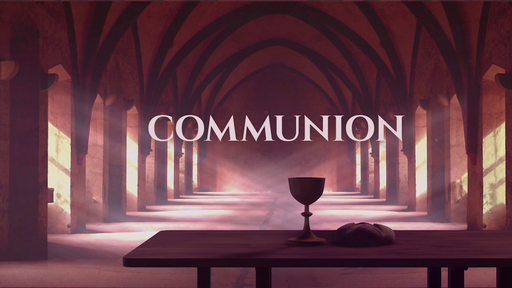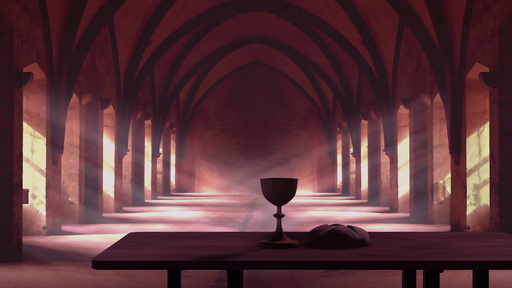Becoming the Dwelling Place of God
Torah Portions • Sermon • Submitted • Presented
0 ratings
· 8 viewsNotes
Transcript
Bible Passage: Exodus 35:1–38:20
Bible Passage: Exodus 35:1–38:20
Summary: In Exodus 35:1-38:20, God commands the Israelites to construct the Tabernacle, a portable dwelling place for His presence. Through specific instructions for materials and craftsmanship, the passage emphasizes the importance of community participation and the heart behind generous giving and skilled work, allowing the people to become a vessel for God's presence in their midst.
Teaching: The sermon teaches that just as the Israelites were invited to contribute to the building of the Tabernacle, so are we invited to contribute to the work of God today. Our acts of service, generosity, and craftsmanship are how we manifest God’s glory in the world.
Big Idea: Just as God empowered the Israelites to build the Tabernacle, He empowers us to become His living Tabernacle today, reflecting His glory through our work and community.
1. Gathering Gifts Gratefully
1. Gathering Gifts Gratefully
Exodus 35:1-9
2. Craftsmanship Called for Christ
2. Craftsmanship Called for Christ
Exodus 35:10-20
3. Generous Giving from Gratitude
3. Generous Giving from Gratitude
Exodus 35:21-29
4. Spirit-filled Service in Sync
4. Spirit-filled Service in Sync
Exodus 35:30-36:7
5. Dedicated Details of Devotion
5. Dedicated Details of Devotion
Exodus 36:8-38:20
The Torah begins with Moses assembling the Israelites and reminding them of God’s command regarding the Sabbath. He instructs them to work for six days but to dedicate the seventh as a holy day of complete rest to the Lord. This command echoes God’s own pattern of creation and rest, inviting the Israelites to mirror His rhythm of work and Sabbath. By following this directive, they participate in God’s generosity—creating as He created and resting as He rested, acknowledging their dependence on Him.
Following this, Moses calls for a freewill offering, inviting those with willing hearts to bring materials—gold, silver, bronze, fine linen, and other precious resources—for the construction of the Tabernacle. This voluntary participation reflects God’s own generosity, as He provides for their needs and invites them to contribute to His dwelling place. In this way, the Israelites not only imitate God’s pattern of work and rest but also His spirit of giving and creation, aligning their labor with His divine purpose.
The Law portion continues with Moses’ instructions to the Israelites, calling all skilled craftsmen to contribute their abilities to the construction of the Tabernacle and its furnishings. This commissioning of artisans reflects God’s own creative work, as He now invites His people to participate in building a sacred space where His presence will dwell among them. Just as God worked in creation and then rested, the Israelites are called to engage in meaningful labor, using their gifts for God’s purposes, and then to rest according to His command.
Moses, as God’s prophet, leads the people in this divine pattern of work and rest, guiding them toward their intended role as co-creators with God. The detailed instructions for the Tabernacle emphasize that their work is not arbitrary but directed by God, ensuring that their creativity aligns with His will. The willingness of the people to bring their resources and talents highlights their participation in God’s generosity, reinforcing the principle that both creation and rest are acts of obedience and worship. At the end of this section, the assembly of Israel departs to prepare their offerings, demonstrating their commitment to this divine commission.
This section powerfully illustrates the partnership between God and His people in the work of building the Tabernacle. The passage emphasizes that it was not merely human effort that brought about this sacred project, but God Himself working within the hearts of the Israelites. Each person who gave an offering or offered their skills did so because they were moved by God’s Spirit. This highlights the deep collaboration between divine initiative and human response—God inspired them to give, and they responded with willing hearts.
This partnership reflects the very nature of God’s relationship with His people. Just as He created the world and invited humanity to participate in His work by stewarding creation, He now invites the Israelites to take part in constructing His dwelling place. The abundance of their gifts—offered freely and joyfully—demonstrates that God was not only instructing them from above but was present and active within them, prompting their generosity. Their willingness to give and work was a tangible sign that they were aligning themselves with God’s purpose, joining Him in the holy act of creation. Through this partnership, God’s dwelling was built not just with materials, but with the love, obedience, and generosity of His people, all of which had been stirred by His own generous Spirit.
Highlighted is the continuation of God’s partnership with His people in the construction of the Tabernacle. Moses announces that Bezalel and Oholiab have been specifically called by God to lead the work. Bezalel is filled with the Spirit of God, granting him wisdom, understanding, and skill in craftsmanship, while Oholiab is also gifted and appointed to assist him. These two men are not only talented but divinely empowered, emphasizing that the Tabernacle’s creation is not merely a human endeavor but a work of God through His chosen servants.
Just as God leads Moses, and Moses leads the people, Bezalel and Oholiab are now entrusted with leading the craftsmen, ensuring that every detail aligns with God’s instructions. Their abilities are a gift from God, showing that the work of creation—whether in the world or in sacred spaces—is guided and inspired by Him.
As the work begins, the people’s generosity overflows. They continue to bring offerings each morning, so much so that the craftsmen report to Moses that they have more than enough materials. In response, Moses instructs them to stop bringing gifts, as the abundance is beyond what is needed. This overwhelming generosity reflects how deeply God had moved the hearts of His people, demonstrating that when they partner with Him, His provision is always more than sufficient. The entire process—from calling the craftsmen to gathering materials—is a testament to God working through His people, leading them to create and give in ways that mirror His own creative and generous nature.
This details the meticulous construction of the Tabernacle, emphasizing how its design and symbolism point to a return to Eden. The skilled craftsmen, led by Bezalel and Oholiab, construct the curtains, frames, and furnishings exactly as God commanded. The Tabernacle’s materials—gold, blue, purple, and scarlet yarn, along with fine linen—reflect the glory and majesty of God’s dwelling place. The cherubim woven into the curtains recall the cherubim that guarded Eden, signaling that this sacred space is where heaven and earth meet once again.
The layout of the Tabernacle further reinforces this return to God’s presence. Like Eden, where God walked with Adam and Eve, the Tabernacle is the place where He will dwell among His people. The entrance faces east, just as the entrance to Eden did (Genesis 3:24), symbolizing a way back into communion with God. The lampstand, with its design resembling an almond tree, echoes the Tree of Life, reinforcing that life with God is being restored.
As the construction continues, every piece—the altar, the basin, the priestly garments, and the courtyard—demonstrates that Israel is being invited into a deeper relationship with God. The same God who walked in Eden now dwells in a tent among His people, moving with them in their journey. The Tabernacle is more than a place of worship; it is a sign that God is restoring what was lost, reestablishing His presence among humanity, and calling His people back into sacred fellowship with Him.
It not only details the construction of the Tabernacle but also highlights the garments of the priests, which were crafted to reflect divine glory. The priestly garments, especially those of the high priest, were made from gold, blue, purple, and scarlet yarn woven into fine linen. The gold, which was beaten into thin sheets and cut into threads to be woven into the fabric (Exodus 39:3), would have glistened in the light, making the priests appear radiant—almost clothed in light.
This radiance symbolized their role as mediators between God and Israel, resembling heavenly beings who reflect the glory of God. Just as the Tabernacle itself echoed Eden, the priests’ garments pointed to a restored connection with the divine. The breastplate with its twelve gemstones shimmered like the firmament, and the gold plate on the high priest’s forehead, inscribed with “Holy to the Lord,” further signified his consecration and closeness to God’s presence.
This imagery connects to the idea that God’s glory is often described as radiant light (Psalm 104:2 says He is “clothed with light as with a garment”). The priests, as representatives of God, were dressed to reflect that very glory. Like the cherubim woven into the Tabernacle’s curtains, they embodied a heavenly reality, standing between God and the people as visible signs of divine presence and holiness. Their garments did not merely signify status but visually reminded Israel that God was restoring the light of His presence among them—just as He had walked with humanity in Eden.
It is important that we see how the Law, the tent of meeting, and the creation of the tabernacle are later celebrated. Rabbinic tradition connects the giving of the Torah with the Jewish fall festivals, particularly the Feast of Trumpets (Rosh Hashanah) and the Day of Atonement (Yom Kippur). According to this tradition, when Moses ascended Mount Sinai to receive the first tablets of the Law, it was on the 6th of Sivan (Shavuot). However, after Israel’s sin with the golden calf, Moses broke the first tablets. He then spent 40 days interceding for the people and ascended Mount Sinai again on the first of Elul to receive the second set of tablets. After another 40 days, he descended with the new tablets on the 10th of Tishrei, which is the Day of Atonement (Yom Kippur). This sequence ties the restoration of the covenant to Yom Kippur, emphasizing repentance and atonement.
The Feast of Trumpets (Rosh Hashanah), celebrated on the 1st of Tishrei, marks the beginning of the “Ten Days of Awe,” a period of introspection and repentance leading up to Yom Kippur. It is believed that the shofar (ram’s horn) blast recalls the revelation at Sinai when God gave the Law, linking this festival to the renewal of God’s covenant with Israel.
Shortly after Yom Kippur, the Feast of Tabernacles (Sukkot) begins on the 15th of Tishrei. This festival commemorates Israel’s journey through the wilderness, where they dwelled in temporary shelters (sukkot) and where God’s presence was with them in the Tabernacle. The Tabernacle, constructed after the second tablets were given, was God’s dwelling among His people, just as Sukkot celebrates God’s continued presence and provision. Thus, the fall festivals form a theological arc: the Feast of Trumpets recalls the giving of the Law, Yom Kippur marks the renewal of the covenant with the second tablets, and Sukkot celebrates God’s abiding presence, just as the Tabernacle did in the wilderness.
ADVERTISEMENT
Related Media
See moreRelated Sermons
See more

Roger Ferguson • 4 views


Roger Ferguson • 3 views



